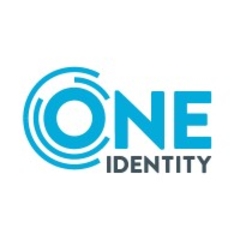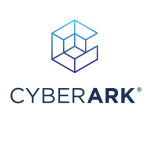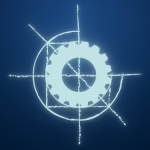What is our primary use case?
I have worked on various European projects where we mainly use this tool as an Identity and Access Management (IAM) solution rather than its Privileged Access Management (PAM) features. Specifically, it serves as a central IAM tool for governance, compliance, and managing access requests across all the companies and projects I've been involved with. Most of these access requests were processed through Microsoft tools. They were onboarding applications and managing access to them via One Identity Manager through the portal it offers.
How has it helped my organization?
Every identity management tool has its unique features, and I believe that One Identity Manager performs quite well. From a developer's perspective, its interface provides excellent information. It includes appealing visuals and a user-friendly design, allowing you to clearly see how software accounts correlate or match with an identity. This gives you a comprehensive view of what an identity encompasses. You can establish specific rules to determine if access is fully managed by One Identity, which acts as the authoritative source for system access. Additionally, it offers a range of capabilities and customization options for managing access across various applications. Overall, I think One Identity Manager does a commendable job in this area.
One Identity Manager can be set up to have accounts synced from the SAP system and have them as orphaned in the system. The intended way is to link them to an identity, and when clicking the identity of the employee, you will see underneath the AD accounts, other application accounts, and different SAP accounts. For each SAP system, you can have specific rules. It has this capability out of the box, SOD rules, different roles, and bundles.
When users request access for a SAP system and do not have an account already, an account is created based on specific criteria that can be defined. From an end user point of view, they go to the portal and request access. If they do not have an account, they get one. If they already have an account, the access will be added and provisioned properly. The account will be connected to their identity with all the access in the downstream application in SAP. It requires a good architect to think through all the different cases for the business. Many connectors must be built because some companies use upwards of 200 SAP systems.
One Identity Manager offers governance for cloud apps through its cloud framework. The logic remains similar to on-premise applications: build a connector, import data, create business roles, enable requests, and implement approvals. The governance framework is particularly strong with application approval workflows and recertification processes.
The solution provides technical options to distinguish between different types of accounts per system. For AD, different rules can identify and manage various account types differently. It offers strong reporting capabilities and can detect policy violations.
For application management, One Identity Manager has a built-in risk framework that helps businesses with approvals and recertifications. Full application management without IT involvement requires building custom frameworks.
It helps to streamline application access decisions, application compliance, and application auditing for customers. When auditors come in, they require that access be managed using an IGA tool. It's quite easy to set up; you just need to build a connector to facilitate this access. In addition, a business analyst can identify the business rules needed. You publish the business rules and set up an approval process—usually requiring two approvals if it's related to the application. Once the business rule is published, a user can request access through the portal, and someone will approve it—standard procedure. You can also run certifications and set up different approval processes for employees who need access for one year or for those who are moving (like shifts). Certification can involve various terms, including access reviews or access refusals. It's a straightforward process. It's strong and reliable. I've seen hundreds of applications successfully managed and compliant because of this process, which includes approval requests and access refusals. You simply onboard the application, and you're set—it all becomes remote for you. All the audit trails are available. You can see who approved what, why they approved it, when the access was granted, and when it was revoked, among other details. It truly helps to maintain compliance.
The solution offers some out-of-the-box capability to manage profiles, but I have not worked with other aspects. In the companies where I was working, they were not using this from a SAP point of view.
What is most valuable?
One of the most significant advantages is its strong security around identity management when compared to other tools; it's quite robust. However, it does come with a high learning curve, making it difficult to implement and operate without a dedicated IAM team. You need people with substantial experience—likely several years—in order to navigate the complexities effectively. It's not something you can easily outsource entirely to a consultancy. In the past couple of years, they released a new version, Version 9, building on the previous version 8.02. This new version introduced a revamped portal where end users can request access. The previous version had a built-in portal that was quite complex to configure. In the new Version 9, they developed a new portal based on Angular, which offers many capabilities. If someone knows how to utilize it and learn its features, they can make API calls to interact with other systems. Some consulting firms are already developing custom frameworks around this to leverage these capabilities.
This new portal is where end users go to request access. It provides good out-of-the-box functionalities, allowing users to request access to various applications, and managers can approve these requests. In addition to the default functionalities, the use of APIs is enabled through the portal. However, the general market lacks expertise regarding this tool; only a few companies are actively investing in understanding how it works and offering their services based on that knowledge. Many businesses are migrating to this new portal as the older versions are being phased out of support and are eager to learn how to maximize its capabilities.
Overall, One Identity Manager is a robust tool designed for large enterprises and is still an on-premise solution.
What needs improvement?
One Identity Manager does not offer much in terms of delivering SAP-specialized workflows and business logic. Custom workflows can be built, but it is limited in that regard. Comparing it to SailPoint, One Identity Manager is less advanced around SAP, particularly regarding the flexibility to build custom flows. While customizations are possible through processes in One Identity Manager where you can build PowerShell code or make API calls, this is not the intended way and requires heavy customization that might become unmanageable.
They could offer more out-of-the-box connectors so that custom PowerShell connectors would not need to be built.
The support could be improved. They could add more AI to help with role mining. The new portal documentation needs improvement as some partners are more advanced in understanding how the Angular portal works than One Identity itself.
For how long have I used the solution?
I'm not currently working with it. I stopped working with it three to four months ago. Before that, I worked with it for about three years and seven months.
How are customer service and support?
Regarding support, they prioritize resolving escalated issues. However, their response can be slow. Whenever I open a ticket, the reply often includes a request for the specifications of the server I am using. For instance, they frequently ask, “How many gigabytes of RAM are you running on the server?” If I'm not using the maximum recommended specifications, they immediately suggest that there is a problem. They don’t always consider that the issue may not be related to performance at all.
I haven’t had the best experience with them, but I understand that they do eventually respond. However, there have been instances where we had tickets open for months without any resolution. Sometimes, they would either go quiet or eventually respond and help us find a solution. I’ve faced many similar situations across various projects.
At the end of the day, I’m not a customer, so I’m not too concerned about the experience. However, the application owners of One Identity in these companies have expressed dissatisfaction with the responses they received. They wanted more immediate assistance and access to more skilled resources. That's understandable. Overall, I would rate the experience as a six out of ten.
How would you rate customer service and support?
How was the initial setup?
It depends on the situation. If you're starting from scratch, in a greenfield scenario, where you have nothing set up and don't have an IGA tool, then you can begin by establishing an Active Directory. You start with the basics: take employee data and import it into One Identity Manager to create Active Directory accounts for each employee. This setup can typically be completed in about three to four months. It’s not overly complicated. However, it’s important to note that most businesses have complex processes that don’t easily translate into the tool. To effectively monitor applications and manage these processes, you really need technical expertise.
What was our ROI?
For a large enterprise that has the capability to support an on-premise solution and is willing to find reliable partners to assist with this new portal, along with the technical know-how to match the tool's capabilities, it can be a highly effective solution. This tool offers a wide range of features out of the box. However, the biggest challenge is the steep learning curve; it's essential to have experts with many years of experience and strong technical expertise to maximize the tool's potential. This solution is not suitable for small companies or those seeking a quick implementation. It requires a significant investment initially, but it pays off in the long run due to its extensive features compared to other tools.
What's my experience with pricing, setup cost, and licensing?
I don't have information on the costs associated with the tools or the specific deals they offer. However, I do know that it's challenging to find technical expertise, and these professionals often command high salaries.
In addition to purchasing the tool and its licenses, it's important to account for the need for a dedicated team, especially if you're a large enterprise. There are significant costs involved in maintaining the solution and ensuring it operates effectively. Unfortunately, I don't have details on the licensing fees or per-user costs, among other specifics.
What other advice do I have?
My recommendation is that you really need to understand the realm of identity and access management. It's important to consider the alternatives available, and I believe that for some companies, One Identity is the best solution out there. For specific enterprises, it could indeed be the ideal choice, but for others, it may not be suitable. For instance, a small business with fewer than 25,000 employees, which may not prioritize governance and compliance, might find One Identity unnecessary. It really depends on the landscape of the company using the tool—what their requirements are, what applications they have, and what they're aiming to achieve.
One Identity is quite beneficial for finance-related entities that have strict compliance and security needs. However, One Identity should invest more in AI and enhance their documentation on the new portal. This improvement would help customers and developers better understand what they are building.
The business roles functionality is a very standard part of the access model. Typically, you would start with an application. You gather all the users and their entitlements, which include the accesses they have. Then, you need someone, such as a business analyst or consultant, to help identify bundles or groups of this low-level access. Instead of managing each access individually, you can group them together and create a role for each application, or possibly a combination of different applications. This approach greatly simplifies management. A user doesn’t need to know all the low-level accesses required in a system or across different systems. By creating bundles of access with accompanying business rules, it becomes easier to understand. For example, if I am a DevOps member working with AWS, there’s already a pre-defined access bundle for me. My colleague can tell me to request this specific access, which provides everything I need. Alternatively, access can be automatically assigned based on department—whenever someone joins a specific department, they receive all associated accesses.
Moreover, you can build dynamic rules around these business rules. While technically speaking, in the One Identity Manager, an application role is part of a business role. However, it’s important to note that you can have a business role defined by specific criteria. Anyone who meets this criterion receives the business role, which is beneficial for management. For instance, if you want to grant access to new hires for applications like Teams, all relevant accesses can be bundled into a business role. If someone leaves the company, their status would change to inactive, and they would lose their access. This streamlines the access lifecycle management process.
From an end-user perspective, it simplifies requests for specific applications or accesses per department. Depending on your chosen architecture and access model, this organization is crucial. However, a key requirement is to have a business analyst involved; otherwise, you risk ending up with scattered entitlements and groups that lack clarity regarding their business association. Finally, don't forget to set up an approval process.
From an end-user perspective, with the new Angular portal in version 9 and upwards, it has improved significantly. However, not all companies have migrated because they have custom logic in the old portal that needs to be translated to the new Angular portal. The new portal is better as it is easy to navigate with straightforward navigation bars. Previously, sometimes custom queries behind the portal really slowed down end-user performance, with users reporting waiting 15-20 minutes for a page to load, especially during approvals or attestations. This was particularly frustrating for users needing high-level managerial approvals for various tasks. In the new portal, you can customize tasks to address some of these performance issues, making it a more efficient experience.
Overall, I would rate it a seven out of ten.
Which deployment model are you using for this solution?
On-premises
Disclosure: PeerSpot contacted the reviewer to collect the review and to validate authenticity. The reviewer was referred by the vendor, but the review is not subject to editing or approval by the vendor. The reviewer's company has a business relationship with this vendor other than being a customer: Partner


















